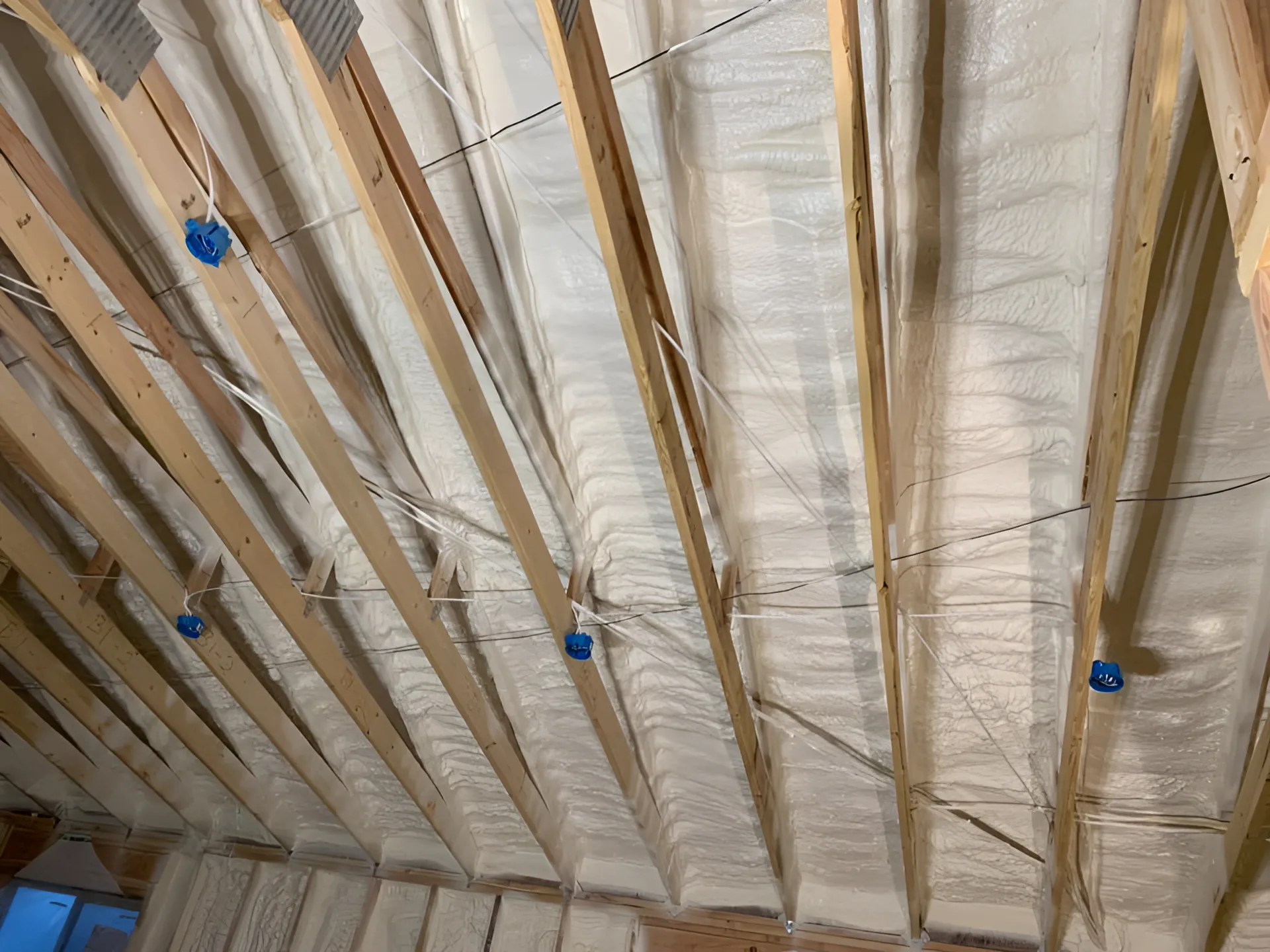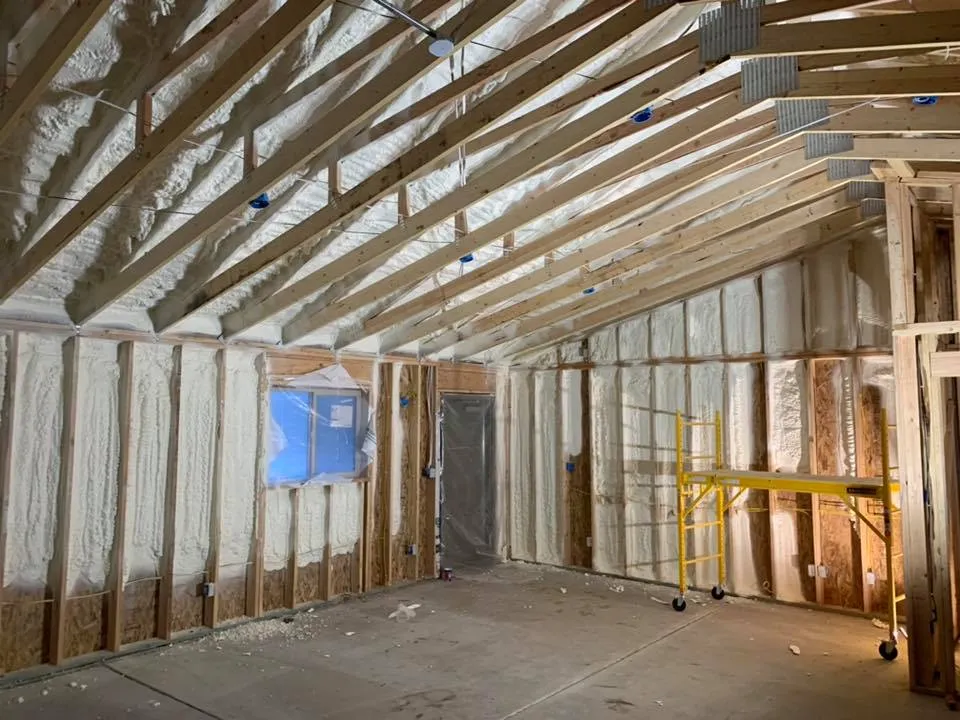
Replacing old, inefficient insulation like fiberglass batts or loose-fill cellulose with open-cell spray foam is a significant upgrade for any home in Idaho Falls. The most immediate change is the creation of a comprehensive air barrier. Unlike traditional insulation, which only slows heat transfer, open-cell spray foam expands to fill every crack and crevice, effectively stopping air leakage. This results in a more comfortable home with fewer drafts, more stable indoor temperatures, and noticeably lower energy bills.
This upgrade changes how a home breathes, which improves energy performance while also introducing new considerations for air quality and moisture management. The process involves removing the old material, preparing the surfaces, and applying the new foam. This article provides a detailed look at what this change means for your property, covering the benefits, the technical details, and important factors to weigh before starting a project. This information is offered to help homeowners make informed decisions based on extensive experience in local building performance.
Upgrading to spray foam isn’t just about adding new material; it’s a multi-step process that starts with properly handling the old insulation.
First, the existing insulation must be completely removed. For materials like fiberglass batts or blown-in cellulose, this is often done using high-powered vacuums that collect the material in bags for disposal. If older materials like vermiculite are present, it’s important to test for asbestos, as its presence requires specialized abatement procedures for safety. A clean cavity is essential for the spray foam to adhere correctly and form a perfect seal.
Once the cavities are empty, the focus shifts to preparation. This is the ideal time to inspect the underlying structure. Any signs of moisture damage, rot, or pest infestation must be addressed before new insulation is installed. All surfaces must be clean, dry, and free of dust or debris to ensure the foam bonds properly. This step is also the last chance for any electrical or plumbing updates within the walls before they are sealed.
Bonus Tip: Before applying foam, it’s a good practice to use a moisture meter on the wood studs and sheathing, especially in attics and crawl spaces. Ensuring the wood’s moisture content is below 20% prevents trapping moisture, which could lead to decay over time.
Professional installers use specialized equipment to mix the two-component liquid foam at the nozzle. As it’s sprayed onto the surface, it expands up to 100 times its original size in seconds, creating a soft, flexible, and fully adhered insulation layer. The foam is applied to the desired thickness to meet or exceed local building code requirements for R-value. After it cures, any excess foam is trimmed flush with the studs, creating a flat surface ready for drywall.
The benefits of an open-cell spray foam upgrade extend beyond just feeling warmer in the winter, as the changes impact a home’s overall performance and comfort.
The primary benefit is a dramatic reduction in air leakage. A report from the U.S. Department of Energy highlights that sealing air leaks can save a homeowner 10% to 20% on heating and cooling costs. Because open-cell foam creates such a tight seal, it stops the drafts and heat loss that plague many older homes, especially during Idaho’s cold winters. This translates directly to lower utility bills and a smaller carbon footprint.
Open-cell foam’s soft, sponge-like texture makes it an excellent sound-dampening material. It absorbs airborne sound waves, reducing noise transfer between rooms and from the outside. Homeowners often report a significant reduction in traffic noise, wind noise, and sounds from other parts of the house, creating a more peaceful living space.
By sealing the small gaps and cracks in a building’s shell, spray foam helps block the entry of dust, pollen, and other outdoor pollutants. This can lead to a noticeable improvement in indoor air quality, which is particularly beneficial for individuals with allergies or respiratory conditions.

While both types of spray foam insulate effectively, they have different properties that make them suitable for different applications, particularly in a climate like Idaho Falls.
| Feature | Open-Cell Spray Foam | Closed-Cell Spray Foam |
|---|---|---|
| R-Value per Inch | ~R-3.7 | ~R-6.5 |
| Vapor Permeability | Permeable | Non-permeable |
| Density | Low (~0.5 lb/ft³) | High (~2.0 lb/ft³) |
| Expansion | High (up to 100x) | Low (up to 30x) |
| Cost | Lower | Higher |
| Sound Dampening | Excellent | Good |
For most residential applications in Idaho Falls, such as walls and vented attics, open-cell foam is often a great choice. Its vapor permeability allows any moisture that gets into the wall cavity to dry out, which is a key consideration for building longevity. Closed-cell foam, with its higher R-value and built-in vapor barrier, is typically better suited for basements, crawl spaces, and situations where space is limited and a higher R-value is needed.
Before committing to a spray foam upgrade, there are several important factors to evaluate to ensure it’s the right move for your specific home.
Creating a highly airtight home with spray foam means you are also sealing off natural air exchange pathways. According to guidance from the Environmental Protection Agency, modern, airtight homes may require mechanical ventilation to maintain healthy indoor air quality. It may be necessary to install a heat recovery ventilator (HRV) or energy recovery ventilator (ERV) to provide fresh air without sacrificing energy efficiency.
Spray foam insulation is a premium product with a higher initial cost compared to traditional options like fiberglass or cellulose. A 2022 cost analysis published by Forbes Home puts the average cost between $1.25 and $4.00 per board foot, depending on the type and location. While the upfront investment is larger, the energy savings over time can provide a substantial return, along with the added benefits of comfort and improved air quality.
Bonus Tip: When getting quotes, ask installers to provide a clear breakdown of costs, including surface preparation, foam application by area, and any necessary ventilation upgrades. This helps you compare apples to apples.
The performance of spray foam is heavily dependent on the quality of the installation. An inexperienced installer can create problems, such as off-ratio mixing that leads to odors or poor adhesion. It’s important to choose a certified and insured contractor with a proven track record of successful projects.
Replacing old insulation with open-cell spray foam is more than just a simple update; it fundamentally changes how a home performs. The result is a structure that’s more energy-efficient, comfortable, and quiet. For homeowners in Idaho Falls, this means better protection against harsh winters and hot summers alike. Before proceeding, it’s best to evaluate your home’s ventilation system, budget, and long-term performance goals to ensure this solution is the right fit for your needs.
Understanding the specific conditions of your home is the first step toward a successful insulation project. A professional evaluation can identify areas of heat loss, assess ventilation requirements, and provide a clear plan for an upgrade. To discuss your project, contact High Country Solutions for an assessment by calling (307) 248-9063 or sending an email to [email protected].
For an average-sized home, removing old insulation and installing new spray foam typically takes two to four days. The foam cures quickly, but the property usually needs to be vacated for 24 hours during and after application to allow for proper ventilation.
When installed correctly, spray foam is largely odorless after its 24-hour curing period. A persistent chemical smell can be a sign that the foam was mixed improperly. This is another reason why selecting a reputable installer is so important for the project’s success.
Yes, spray foam is commonly used in retrofit projects. For existing walls, it can be injected into cavities through small holes, a method sometimes called “injection foam.” It’s most easily applied in open areas like attics, crawl spaces, and during major renovations when wall cavities are exposed.
Open-cell foam is vapor-permeable, meaning water vapor can pass through it, allowing building materials to dry. It does not wick or retain liquid water like a sponge. If it gets wet from a leak, the water will drain out, and the foam will dry and return to its original state without losing its insulating properties.
An investment in spray foam insulation is often seen as a valuable upgrade by potential buyers. The documented energy savings, improved comfort, and better air quality can make a home more attractive on the market. It’s a feature worth highlighting when selling a property.